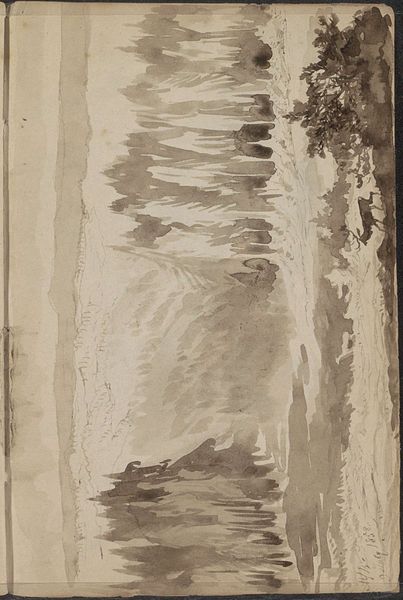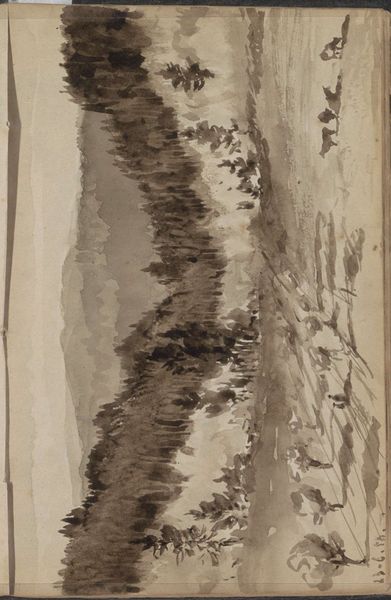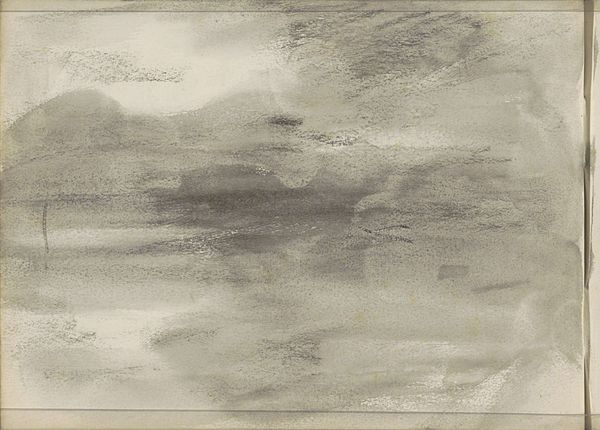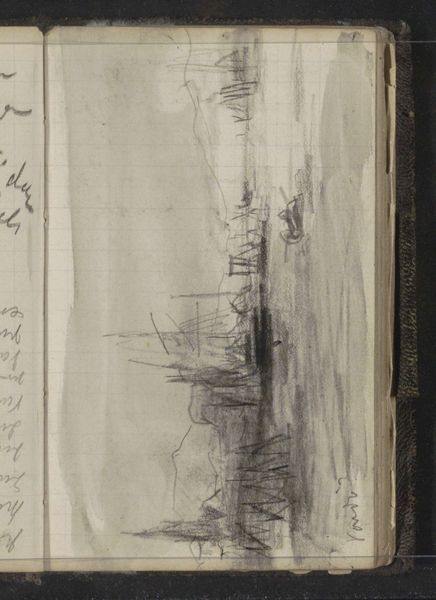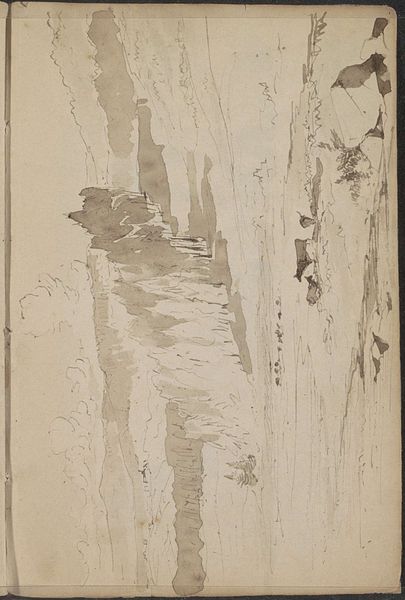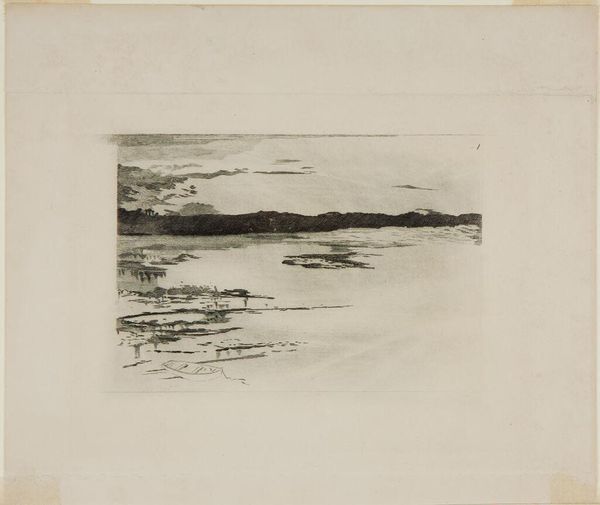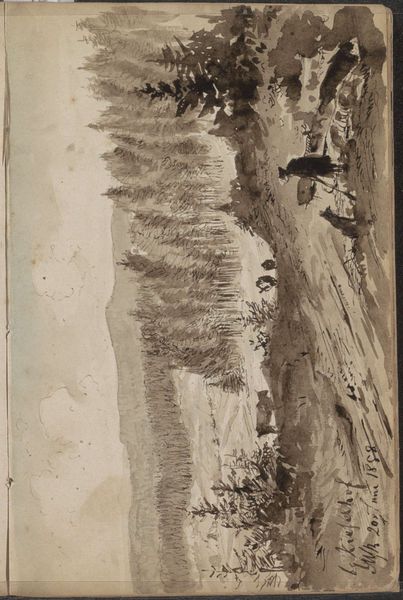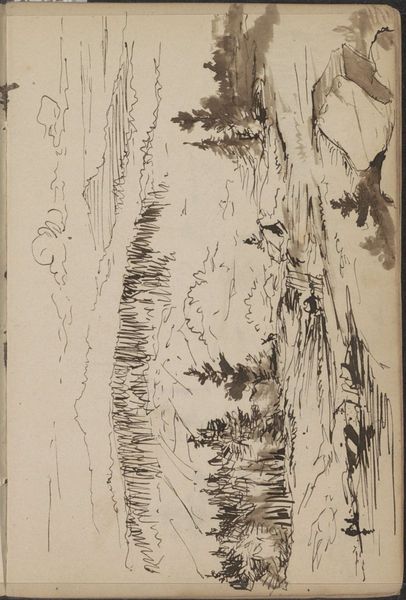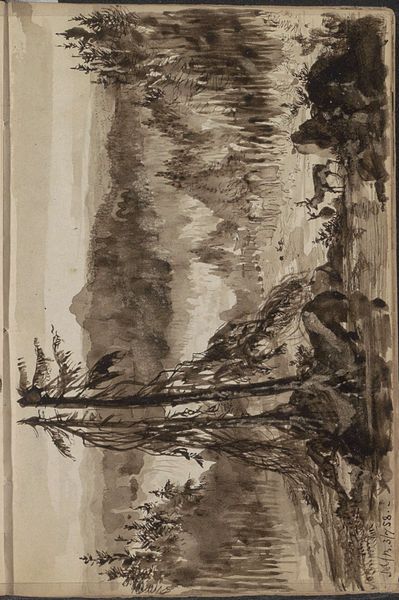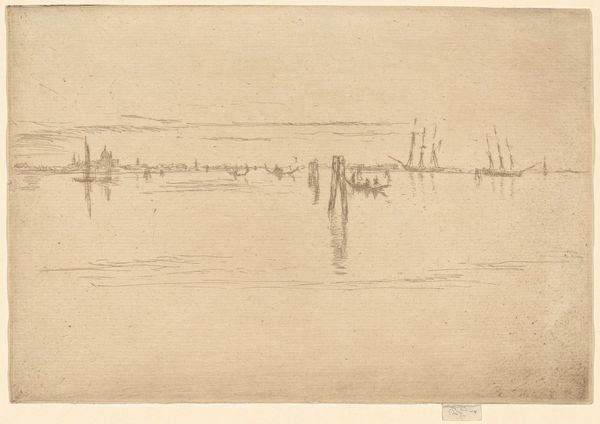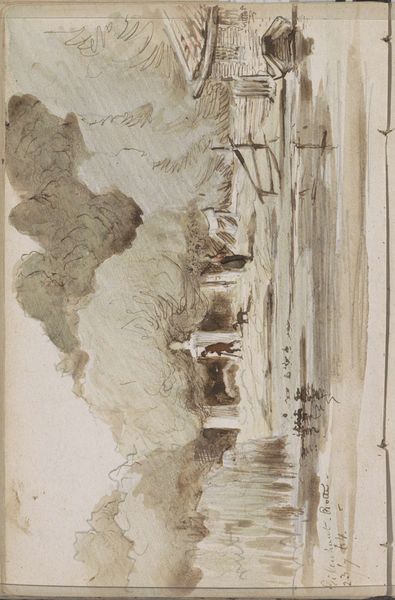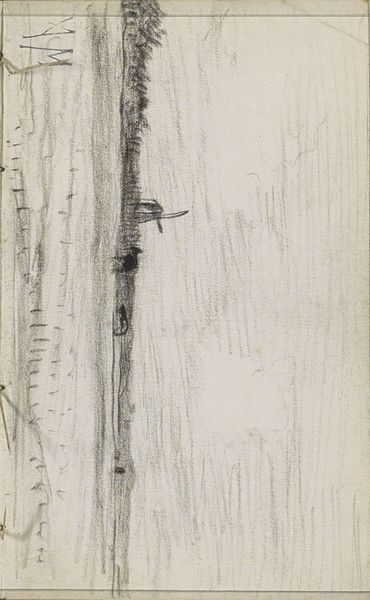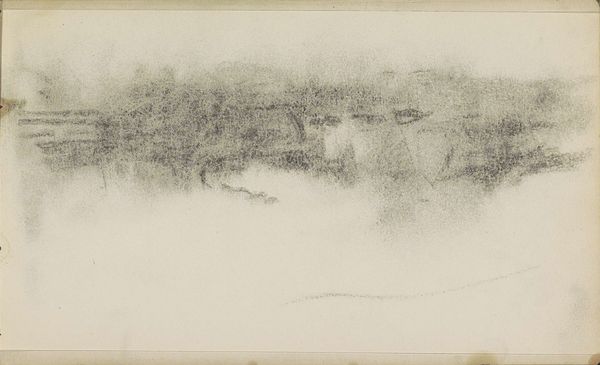
Copyright: Rijks Museum: Open Domain
Curator: Let's consider "Mountain Landscape with Pine Trees and Deer," a work on view here at the Rijksmuseum, created around 1858 by Johannes Tavenraat. Editor: It has this hazy, almost dreamlike quality. The stark contrasts between the dark trees and the light sky definitely create a melancholic atmosphere. Curator: Indeed. Note the artist's meticulous use of ink and watercolor. He builds depth by layering washes, a common technique in 19th-century landscape studies. But think about the availability of pigments then, and the paper. Sourcing those raw materials was deeply enmeshed in global trade networks. What looks spontaneous was actually shaped by those structures. Editor: You're right; even landscape wasn't divorced from material reality. Formally though, I am intrigued by how Tavenraat divides the composition. The strong verticality of the trees against the implied horizontal plane creates this push and pull. The gaze follows that contrast. Curator: And those little figures – the deer! Their inclusion is fascinating when thinking of landscape as property, or wilderness as a resource extracted for consumption. Were they placed just for visual pleasure or were they symbols of something more significant, about human relationship with the natural world? Editor: They certainly draw the eye in and break the density. Perhaps suggesting vulnerability? It is a rather Romantic gesture on his part, too, invoking feeling and a certain sublimity. Curator: It challenges that traditional view. If we look closely at the underpainting—which is still very evident through these thin applications of watercolor—we can almost see the labor of his practice coming through. A peek into the working method of this landscape artist of the time! Editor: Ultimately it's a very evocative image, both immediate in its aesthetic appeal but with subtle formal considerations and deeper social resonance as you rightly highlighted. Curator: It shows us how materials and manufacturing shaped our landscapes and art of the era, too.
Comments
No comments
Be the first to comment and join the conversation on the ultimate creative platform.
